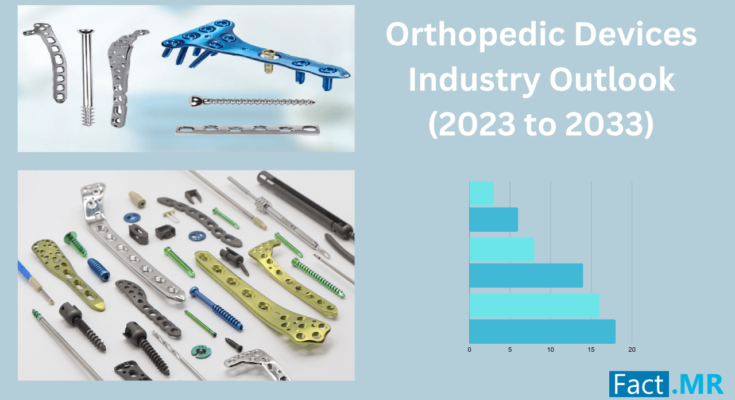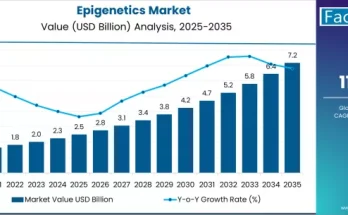Orthopedic Devices Industry Overview
Orthopedic devices cover an important segment of the medical industry. It is critically important for improving the quality of life of millions worldwide. Whether alleviating chronic pain, restoring mobility, or repairing traumatic injuries, these devices are at the core of contemporary medicine.
However, what truly is the orthopedic devices market, and which trends shape its future? Let’s dive in.
What Are Orthopedic Devices?
Orthopedic devices are specially designed medical instruments used in treating quite a wide variety of musculoskeletal disorders. Among these are fractures, arthritis, sports injuries, and some congenital conditions like torticollis and scoliosis, apart from degenerative diseases such as osteoporosis. This broad spectrum includes devices like joint implants, bone plates, screws, spinal devices, and even advanced technologies such as robotic-assisted surgical systems.
Joint replacement devices, in the form of hip and knee implants, constitute the highest usage among all orthopedic products. These implants are designed to replicate the natural functioning of joints, alleviating pain and providing more mobility to patients. The next in demand are spinal fusion instruments, used to stabilize the spine; fixation devices, including plates and screws, are also in great demand as they are crucial for the healing of bone fractures.
Trends to Watch in the Orthopedic Devices Industry
The orthopedic devices market is not static; new technologies, demographic shifts, and evolving patient requirements are changing the market.
One of the major trends in recent years has been the rise of minimally invasive surgical techniques. Increasingly, today’s patients seek procedures that bring quicker recovery times, less scarring, and reduced post-operative pain. This shift has driven demand for specialized instruments and implants designed for minimally invasive procedures.
Our recent analysis states that the global orthopedic devices market is projected to grow at a CAGR of 4% between 2023 and 2033. Currently valued at $45 billion, the market is expected to expand to $67 billion by the end of 2033. (Obtain a comprehensive analysis of this research)
Another key trend is an increased focus on personalized medicine. Orthopedic devices no longer fit all. Due to the adoption of 3D printing and computer-aided design, it is easier to create more complex implants and devices based on individual anatomy. This allows for better fitting and functioning devices and better patient outcomes.
Another area of interest is the integration of robotics and artificial intelligence into orthopedic surgery. Robotic-assisted surgeries can attain better precision and, therefore, better alignment and placement of implants. AI, on the other hand, is being used to analyze patient data and help surgeons in the planning stage of complex procedures.
The Role of Wearable Devices: The most exciting development in the Orthopedic Devices Industry
Wearable technology is one of the more exciting developments occurring in the orthopedic devices market. Smart braces, exoskeletons, and wearable sensors are increasingly deployed to monitor patient recovery and provide real-time data to healthcare providers. This type of device would be able to record the motion, and load on joints, and detect very early signs of complications. With this data-centric approach, more personalized treatment plans could be designed for enhanced clinical results.
Regional Trends: A Global Perspective for Demand of Orthopedic Devices
While the market for orthopedic devices is worldwide, regional trends differ quite significantly, being dependent upon various factors, in particular, healthcare infrastructure and patient demographics, and current economic conditions.
- The North American market is mature, with the rate of adoption of advanced technologies in that region very high. The aging population, combined with the high rates of obesity in this region, has generated significant demand for joint replacement surgeries. Innovation, or the bulk of the newer devices and surgical techniques, is still seen to originate from the U.S.
- Next in line is Europe, wherein countries such as Germany, the U.K., and France remain the leaders in the delivery of orthopedic care. Developed healthcare infrastructure and a strong focus on research and development have supported the growth in this regional market. However, economic challenges and issues related to reimbursement at times act as barriers to this growth.
- One of the fastest-growing orthopedic device markets can be seen in Asia-Pacific. This is a result of its large populations, such as those of China and India, coupled with an increased incidence of orthopedic diseases. The challenge and opportunity come in the form of hard accessibility of advanced treatment options in such predominantly rural areas.
Market Drivers and Restraints for the Manufacturers
Several factors are pumping life into the orthopedic devices market. Of these, the aging population is probably the most significant. The greater the possibility of people living longer, the greater their risk of developing conditions such as arthritis, osteoporosis, or even simple fractures—all of which call for orthopedic intervention.
Another key driver is technological innovation: material innovations in developing biocompatible metals and ceramics have enabled longevity and better performance of implants. Moreover, making surgical procedures and including digital technology make them safer and more effective.
Market complications do exist, though. Advanced orthopedic devices and procedures can be very expensive and therefore may not find many takers, particularly in developing regions. Reimbursement issues and regulatory hurdles may also retard the adoption of new technologies. Furthermore, the potential risk of complications and associated revision surgeries may sometimes make patients leery of opting for orthopedic interventions.
A Promising Future Ahead
The future of the orthopedic devices market seems bright, with its main drivers being technology innovation, aging populations, and growing emphasis on personalized care. With further evolution of the market, increasingly sophisticated devices, less invasive procedures, and improved patient outcomes can be expected.
Challenges in terms of cost and access to care, however, are just as real. Further innovation, the formation of strategic partnerships, and a focus on making advanced orthopedic care available to all will prove to be the keys to tackling these.
The orthopedic devices market thus holds immense potential to give hope and healing to millions of people across the world in times to come in healthcare.



